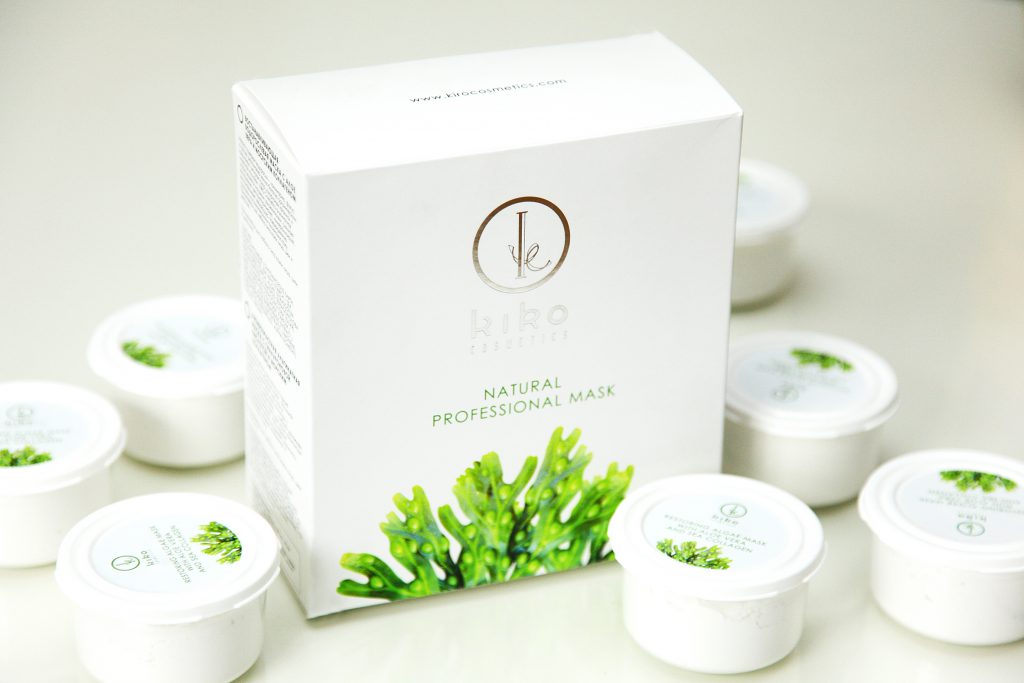After a little obsession with active charcoal in the skin and hair care, I switched to algae 🙂 They kept me awake at nights. I know that La Mer cream – one of the most expensive creams in the world – uses the power of algae (obviously, it’s a huge success as world-known celebrities are faithful to the brand). I decided to learn something more about the algae and try their amazing properties myself. What are the substances composed of? Do they come in different varieties? If so, which one’s the best for beauty care? What are their benefits in relation to different body areas? Enjoy the sea story! 😀
Algae’s properties. What does alga contain?
Depending on the type of algae in a product, their properties are different. That’s why some of the green water plants include more Alginic Acid whereas others contain more vitamins (therefore a specific diversity of algae is assigned to a specific product). What are algae composed of?
Protein, fats, iodine, potassium, iron, magnesium, chlorine, carbohydrates, zinc, cobalt, copper, bromine, manganese, strontium, vitamins A, B1, B2, B5, B6, B12, C, E, K, PP. It sounds like a vitamin supplement for sports freaks 🙂 That’s not the end of the ‘algae list of benefits’. Apart from the well-known elements, algae contain:
Alginic Acid – perfectly absorbs water so it has strongly-hydrating properties, which is the key element in the skincare routine. That’s why all of the algae ingredients can effortlessly penetrate the epidermis and nourish deeper skin layers, too. Alginic Acid effectively regenerates the epidermis and delays the ageing. Thanks to the Acid, algae have hydrating and protective benefits.
D-mannitol and sorbitol – unusually friendly alcohols 🙂 that nourish and moisturise the skin, and make sure the processes in cells are proper. These hydroxylic alcohols balance the sebum secretion on the skin surface, work great in the oily and combination skin care, and keep hair from getting greasy.
Lipids – valuable and essential unsaturated fatty acids (Arachidic, Linolic, Gamma-Linoleic and Eicosapentaenoic Acids are the main acids included in algae). Essential fatty acids are largely responsible for the epidermis renewal; they soothe irritated skin, too. Moreover, they keep the cells work the right way and give the algae their anti-allergic and anti-inflammatory power.
Polysaccharides – one of the main components of the sea plant. Thanks to them, algae can boast about the moisturising and rejuvenating qualities. Hyaluronic acid is among the most important polysaccharides – you must know this strong and natural elixir that ensures youthful looks and bouncy skin.
You must know one more exceptional thing about algae. They obtain energy from the sunlight and use it for intensifying the power of ingredients. That’s why the elements of sea plants work very intensively. Algae contain a few times more vitamins and other valuable substances than all land plants.
Types of Algae – Marine & Freshwater Algae
Because algae occur in different water regions (salty and sweet), they can be divided into two groups:
- Marine Algae (Chlorophyta, Phaeophyceae, Rhodophyta). They have the largest quantity of Alginic Acid and Agar. The purifying power of green algae is used in detoxifying products. Agar algae are amazing ingredients of hydrating and soothing cosmetics.
- Freshwater Algae – most of all, Spirulina and Chlorella – are valued for the high content of amino acids and vitamins. They’re included in products that rejuvenate, speed up healing, regenerate and improve the skin condition.
Algae in Beauty Care – where to search for them?
If you’re bothered by the cellulite, acne, oily or dry scalp, broken blood vessels or limp skin – choose algae-rich cosmetics. Algae that abound in Alginic Acid are mixed with vitamin B and beta-carotene to create a remedy for the orange peel. The skin blood flow is increased whereas toxins are removed from the cells. Spirulina is second to none when it comes to caring for the vascular skin; it seals and strengthens blood vessels. If you struggle with the skin that lacks elasticity, freshwater algae will be your ally; they quickly and effectively activate the division of cells and intensify the production of collagen and elastin. Oily and acne-prone skin is going to like algae, too. Sulphate and carbohydrates normalize the work of sebaceous glands, fight off the bacteria, maintain the right sebum secretion on the skin without leaving it dry (contrary to alcohols).
Algae Home Mask – Recipe
If you want to check the algae benefits on your own skin, check out my recipe for the face mask. It works for the combination and oily skin. The mask upgrades the appearance of the skin (freshens and smooths), controls the sebum secretion and maintains the hydration. Mix two spoons of algae with a spoon of olive oil and a few drops of lemon juice. Apply to the skin, leave in for fifteen mins and rinse out well (preferably, with boiled, tepid water). Good luck!



Leave a Reply